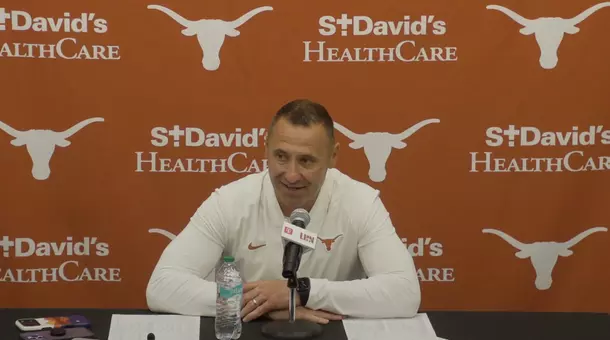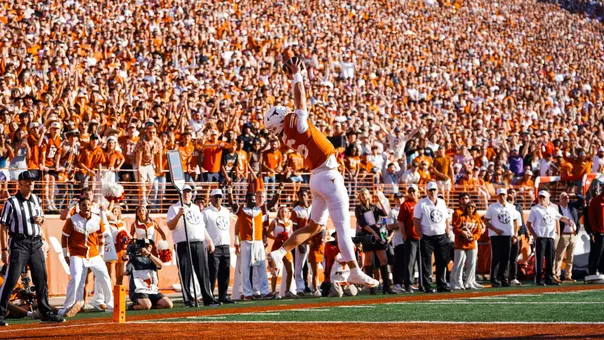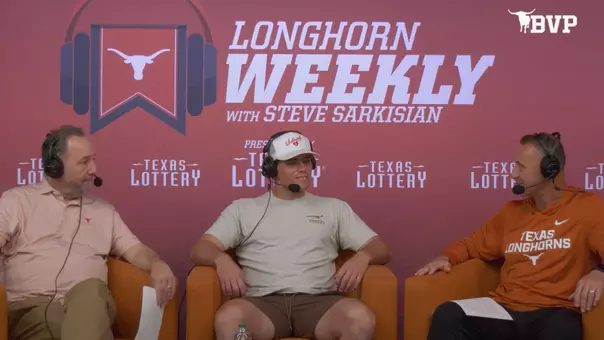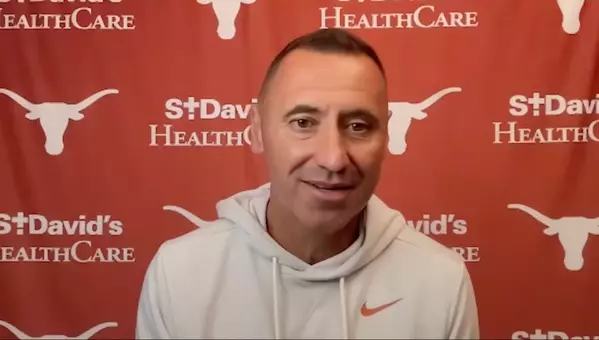The University of Texas at Austin Athletics
Bill Little commentary: Road trip -- The 1963 championship season begins
08.28.2013 | Football, Bill Little Commentary
If football mirrors life, then this remembrance is equal to the task. There are personal stories, tragic and joyful. There are life changing -- and history changing -- events.
It was Scott Appleton who had said it, yelling at the fellow in the striped shirt officiating a practice scrimmage in the spring of 1963. Appleton was not happy with the official's intensity that day, and he let him know about it. As far as he and his teammates were concerned, that practice on the grass field of what was then known as Texas Memorial Stadium was all business.
"Come on," he had chided, "we're not out here for FUN!"
For two straight seasons, the Longhorns had danced a dream of a national championship in college football. In 1961, they had made it all the way to the next-to-last game of the year ranked as the nation's No. 1 team. In 1962, they had survived rugged tests with Oklahoma and Arkansas only to have a tie with lowly Rice knock them from the head of the hunt. Because perennial powerhouse Notre Dame had chosen not to participate in postseason bowl games, the pollsters picked their mythical National Champion following the regular season.
The numbers were frustrating: Including Darrell Royal's third season at Texas in 1959, the Longhorns had finished no lower than fourth in the country in three of the next four years. Texas had won 19 of 22 games over the past two seasons. It was more than reasonable to believe that titles in both 1961 and 1962 had slipped away by the margin of a simple bounce of the football.
So to say the Longhorns of 1963 were focused would be an understatement as they began their fall practice in early September. Classes would not begin until late that month - in fact, registration would only be underway the week of the Longhorns' first game.
Caution was the rule during the fall drills. The year before, tragedy had struck in the Southwest Conference just as the teams started their pre-season work on September 1, 1962. Though the temperatures that day weren't close to the searing 100-plus numbers that seem to face teams who now begin in August, in both Dallas and Austin players at SMU and Texas would go down with fatal complications from overheating.
The death of UT sophomore Reggie Grob caused coaches and trainers to re-think procedures, and the workouts were monitored closely and adjusted accordingly based on the weather and humidity. So when the Southwest Conference media tour came to Austin early in practice, Royal wasn't overly excited about the prospects of the Longhorns.
Eight starters were gone from the 1962 team, and though a host of seasoned lettermen returned, Royal offered this: "We're not as good a football team (as last year) and people think we are. A lot of other teams think they're improved, and I know for sure we are not. We're going to need a lot of breaks."
Whether he was giving an honest assessment or "playing possum," we will never know. For most of his career, he adhered to the old Teddy Roosevelt slogan of "speak softly and carry a big stick."
As fall practice progressed, Royal and his staff honed a team that had 27 lettermen, and things brightened considerably -- except for a little matter of a hurricane that formed in the northwest Gulf of Mexico, and plowed ashore the week of the game -- threatening the hometowns of a number of the Longhorns players.
"A lot of the guys went home," recalls one of the tri-captains, David McWilliams. "We thought we would get off from practice, but the rest of us had to practice anyway."
The opening game of the season was on the road, in Tulane Stadium - home of the Sugar Bowl game. As Texas fans were thinking of celebrating their trip in the French Quarter drinking Hurricanes from Pat O'Brien's, that unwelcome visitor from the Gulf -- this one a real hurricane named Cindy -- was making her way into the southeast Texas coast. The storm had minimal winds, but brought a screeching halt to an extended drought in the area along the Texas-Louisiana border. As the Texas travelers prepared to drive to the Friday night game in New Orleans, Cindy unloaded more than 23 inches of rain at Deweyville, causing heavy flooding along the Sabine River and roads east.
But New Orleans was well clear of the storm's path, and by Thursday night the Longhorns were safely sequestered at the historic Jung Hotel, waiting for the Friday night match with the Green Wave. It was then that Royal -- who had verbally jostled with his friend, Dan Jenkins, (who had picked the Longhorns No. 1 in preseason) -- confided to Austin American Sports Editor Lou Maysel, "If Duke finds himself, we could take off."
Duke, of course, was the Texas quarterback who would be entrusted with game management for a team whose offense had been questioned in 1962, but whose defense was stellar. The opening game reflected the growing pains of the offense and the experience of the defense. It also showcased the Longhorn kicker, Tony Crosby.
Before the day of the soccer style kicker completely changed the placement kicking in college football, Crosby was unique. He, like the other kickers of his time, was a straight-on kicker. But instead of hitting the ball with the toe of his shoe, Crosby went barefoot. Bending his toes back, he would connect with the pigskin with the ball of his foot, and in the old stadium in New Orleans he got off to a great 1963 start by booting field goals of 27 and 31 yards in what turned out to be a 21-0 opening victory.
The Longhorns were on their way. They followed the Tulane game by beating Texas Tech, 49-7, scoring more points than a Texas had team had put up in a single game since 1949. The trademark of the team, however, would be its defense, which allowed only 71 points all season -- including eight of the eleven games where teams scored seven points or fewer.
The goal, of course, was to traverse the season unbeaten. Twenty-two years before, the 1941 UT team had been ranked No. 1 and was featured on the cover of Life Magazine before a tie and a loss ended their chance at a mythical national championship. Twenty-two years later, that team -- which received a top ranking from both the Williamson and the Berryman systems (both respected ranking sources at the time) -- was the only Longhorns team to receive any postseason ranking as No. 1.
A stunning 28-7 victory over Oklahoma, when the 'Horns were ranked No. 2 and the Sooners were No. 1, vaulted Texas to the top spot in all of the major polls. And for six grueling weeks, they held on. They won four straight games over Arkansas, Rice, SMU and Baylor in which a touchdown or less separated them from failure.
Finally, they had to come from behind to defeat a bad Texas A&M team, 15-13, to seal the deal and win the consensus championship. And in the Cotton Bowl game, they silenced all of the critics by disposing of Navy and Heisman Trophy winner Roger Staubach, 28-6.
Not only did the team succeed on the field, the players were excellent in the classroom as well. Of the 48 lettermen, 45 eventually received their UT degrees.
The reunion will be bittersweet, as the players and their families remember those teammates and coaches who have passed on. The coaching staff this weekend will be represented by T Jones, who was an assistant coach for Royal from 1957 through 1962, and Art Davis, who spent that one season coaching the secondary. Also on hand will be Pat Culpepper, a Longhorn letterman who served as an assistant freshman team coach that season.
The team members and their families will begin the reunion with a dinner on Friday night. Saturday, they will get together for some pre-game festivities, and then they will be recognized on the field -- led at the coin toss prior to the New Mexico State game by the two surviving tri-captains, David McWilliams and Tommy Ford who will serve as honorary captains for the 2013 team's season opener.
Thus, the Longhorn family celebrates the fiftieth anniversary of Texas' first consensus National Championship. If football mirrors life, then this remembrance is equal to the task. There are personal stories, tragic and joyful. There are life changing -- and history changing -- events.
Most of all, it is a story of a band of brothers who simply refused to lose. They entered this university as young boys in an age of innocence, and they saw their world change. In the growing up days of the 1960s, they met every challenge, deflected their detractors and silenced the critics. Through it all, they saw their dreams come true and they finished their year unbeaten -- as the National Champions of college football in the season 1963.





